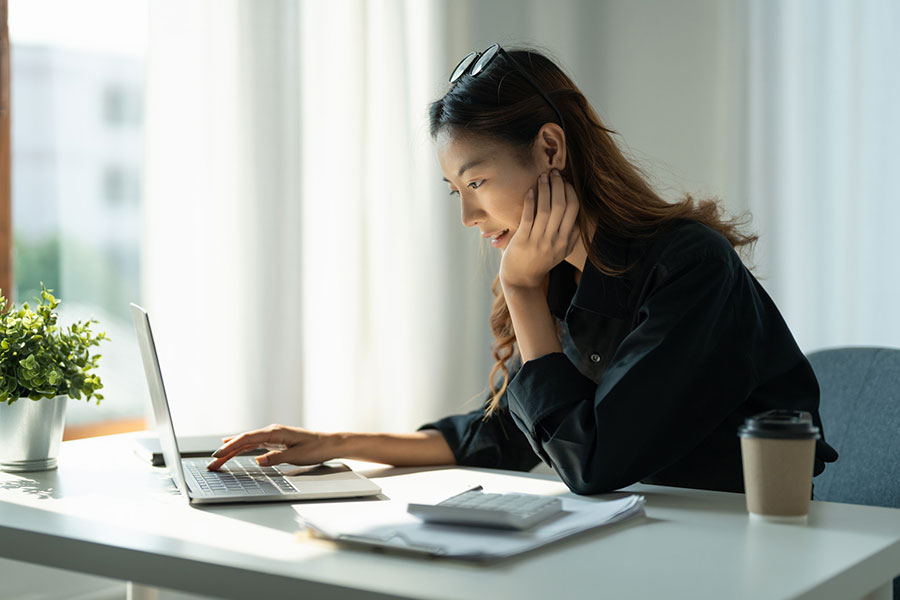How to Write a Credit Dispute Letter That Actually Works
A single error on your credit report could cost you a loan, raise your interest rate, or make it harder to rent an apartment. Mistakes happen more often than you might think—from outdated account details to outright identity theft. But the good news is, you don’t have to live with those errors.

That’s where a credit dispute letter comes in. It’s a written request that asks the credit bureau to investigate and fix any incorrect information on your credit report. Whether you’re dealing with a fraudulent account or a payment marked late by mistake, a well-written letter can help clean up your credit history and protect your credit score.
Here’s what you can dispute—and how to write a credit dispute letter that gets results.
What You Can Dispute on a Credit Report
Credit reports aren’t always accurate. If you spot something wrong, you have the right to dispute it. Here are the most common errors to look out for:
- Wrong personal information – Your name, address, or Social Security number is incorrect.
- Inaccurate account details – The balance is off, the payment history is wrong, or the account is being reported as open when it’s actually closed.
- Late payments reported by mistake – You paid on time, but it shows up as late.
- Accounts that aren’t yours – These could be reporting errors or signs of identity theft.
- Duplicate accounts – The same account shows up more than once.
- Incorrect public records – Bankruptcies, tax liens, or civil judgments that are outdated or don’t belong to you.
- Unauthorized credit inquiries – Hard inquiries listed that you didn’t approve.
You can dispute these issues with the credit bureau directly. And if the creditor is reporting the error, you can also send them a dispute letter at the same time.
Steps to Write a Credit Dispute Letter
Writing a credit dispute letter doesn’t have to be complicated. Just follow these steps to make sure your letter is clear, professional, and more likely to get a quick response.
1. Get a Copy of Your Credit Report
Start by reviewing your credit report from all three credit bureaus—Experian, Equifax, and TransUnion. You can get one free copy per year from each credit bureau at AnnualCreditReport.com.
Mark any errors you want to dispute and note which bureau is reporting them.
2. Gather Supporting Documents
You’ll want to include documents that back up your claim. This might include:
- Payment confirmations
- Bank or loan statements
- Identity theft affidavits
- Letters from the creditor
- Screenshots or emails
Only include documents that clearly support your dispute. There’s no need to over-explain—just make it easy for the reviewer to see the mistake.
3. Write a Clear and Direct Letter
Your letter should include:
- Your full name, address, and contact info
- Your date of birth and last four digits of your Social Security number
- The name of the credit bureau
- The date you’re sending the letter
- A clear explanation of what’s wrong and why it should be corrected
- A specific request for the credit bureau to fix the error (e.g., remove the item or update the payment status)
If you're disputing multiple errors, separate each one into its own paragraph. Keep your tone polite and professional, but firm.
4. Keep a Copy for Your Records
Make a copy of your letter and everything you send with it. You’ll need this if you want to follow up or escalate the dispute later.
How to Format a Credit Dispute Letter
The format of your credit dispute letter matters more than you might think. It helps the credit bureau quickly find your information and understand exactly what you’re disputing. Stick to a clean, straightforward structure so there’s no confusion.
Your letter should include:
- Your contact information – Full name, current address, phone number, and email.
- Your identifying details – Date of birth and the last four digits of your Social Security number.
- The credit bureau’s name and address – This tells them who the letter is for and where to route it internally.
- The date – So the bureau knows when the request was made.
- A clear subject line – For example: “Credit Report Dispute for [Your Name]”
- A brief, focused explanation of the error – What’s wrong, why it’s wrong, and what action you want taken.
- A list of supporting documents – If you're including attachments, say so in the letter.
- Your signature – Sign the letter by hand if you’re mailing it. Typed names are fine for online forms.
Keep your paragraphs short and only address three or four disputes per letter. If you’re disputing multiple accounts, make each one its own paragraph.
Sample Credit Dispute Letter
Here’s a sample letter you can use as a starting point. Customize it with your own details before sending it in.
[Your Full Name]
[Your Street Address]
[City, State ZIP Code]
[Phone Number]
[Email Address]
Date of Birth: [MM/DD/YYYY]
SSN (last four digits): [XXX-XX-1234]
[Credit Bureau Name]
[Credit Bureau Address]
Date: [MM/DD/YYYY]
Subject: Credit Report Dispute for [Your Full Name]
To Whom It May Concern,
I am writing to dispute inaccurate information on my credit report. I recently reviewed my credit report and found the following error:
Account Name: [Creditor Name]
Account Number: [XXXX-XXXX-XXXX]
Issue: This account is showing a 60-day late payment in [Month/Year], but I made the payment on time. I’ve attached a copy of my bank statement confirming the payment was received by the due date.
Please investigate this matter and correct the error. I request that the late payment entry be removed from my credit report.
Attached are copies of my supporting documents. Thank you for your prompt attention to this matter.
Sincerely,
[Your Signature]
[Your Printed Name]
How to Send a Credit Dispute Letter
The best way to send a credit dispute letter is by mail using certified mail with return receipt requested. This gives you proof that the letter was received and when it arrived. Avoid submitting disputes over the phone or through online forms if possible—they don’t always give you confirmation or allow you to explain the situation clearly.
Here’s where to send your letter:
Experian
P.O. Box 4500
Allen, TX 75013
Equifax Information Services LLC
P.O. Box 740256
Atlanta, GA 30374
TransUnion LLC
Consumer Dispute Center
P.O. Box 2000
Chester, PA 19016
If you're disputing errors with more than one credit bureau, send a separate letter to each one. And always keep a copy of the letter and any documents you send in case you need to follow up.
What Happens After You Send a Credit Dispute Letter
Once the credit bureau receives your letter, they’re required by law to investigate the issue. Most disputes are resolved within 30 days, although it can take up to 45 days in some cases.
Here’s what typically happens next:
- The credit bureau contacts the company that provided the information (called the “furnisher”) and asks them to verify it.
- The furnisher has to respond within the same timeframe.
- If the company confirms the information is inaccurate, the credit bureau will update or delete it.
- If the information is verified as accurate, it stays on your credit report.
You’ll receive a written response explaining the outcome of the investigation. If changes were made, you’ll also get an updated copy of your credit report.
If the error appears on more than one credit report, the bureau that corrected it should automatically send the update to the others—but it doesn’t always happen. You may still need to dispute it separately with each credit bureau.
What to Do If Your Credit Dispute Is Denied
Not every dispute ends in your favor. If your request is denied, don’t panic—you still have a few options.
Here’s what you can do:
- Request the evidence – Ask the credit bureau for the documents or information used to verify the item.
- Add a consumer statement – You can include a 100-word statement on your credit report explaining your side of the dispute. Lenders will see this when they check your credit report.
- File a new dispute with more detail – If you left something out the first time, you can send a new letter with better documentation or a more specific explanation.
- Dispute with the original creditor – Go directly to the lender or company that reported the error. They’re legally required to investigate as well.
- Submit a complaint to the CFPB – If you believe the bureau didn’t investigate your claim properly, you can file a complaint.
Stick to the facts, and don’t send the same dispute letter again without changing anything. That increases the chances it’ll be flagged as “frivolous” and ignored.
Consider Hiring a Credit Repair Company
If you're feeling stuck or overwhelmed, you're not alone. Some people choose to work with a professional to help manage the dispute process. An experienced credit repair company will handle the back-and-forth with creditors and credit bureaus on your behalf, saving you time and frustration.
Just be sure to do your research first. Look for a company with transparent pricing, clear service terms, and a strong track record. Avoid anyone promising to “fix your credit overnight”—no company can remove accurate, negative information from your credit report.
Common Credit Dispute Mistakes to Avoid
If you want your dispute to be taken seriously, avoid these common mistakes:
- Being too vague – Don’t just say “this is wrong.” Be specific about what the error is and why it’s incorrect.
- Disputing too many items at once – Limit each letter to three or four issues. Sending a list of 10+ disputes can trigger a rejection.
- Skipping documentation – If you have proof, include it. Just make sure it directly supports your claim.
- Using aggressive language – Keep the tone calm and professional. Angry or threatening language can get your letter dismissed.
- Sending it the wrong way – Don’t submit your dispute over the phone. Mail it using certified mail with return receipt so you have a paper trail.
- Not following up – Set a reminder to check back in 30–45 days if you haven’t heard anything.
A clean, clear, and focused letter will always outperform a rambling complaint.
Final Thoughts
Fixing errors on your credit report might feel like a hassle, but it’s worth it. Cleaning up just one mistake could raise your credit score, lower your interest rates, or help you qualify for better financial products.
If you take the time to write a clear, well-structured credit dispute letter, you're more likely to get the results you want. Stay organized, keep copies of everything, and follow up until the issue is fully resolved.
Errors happen—but you don’t have to let them hold you back.



